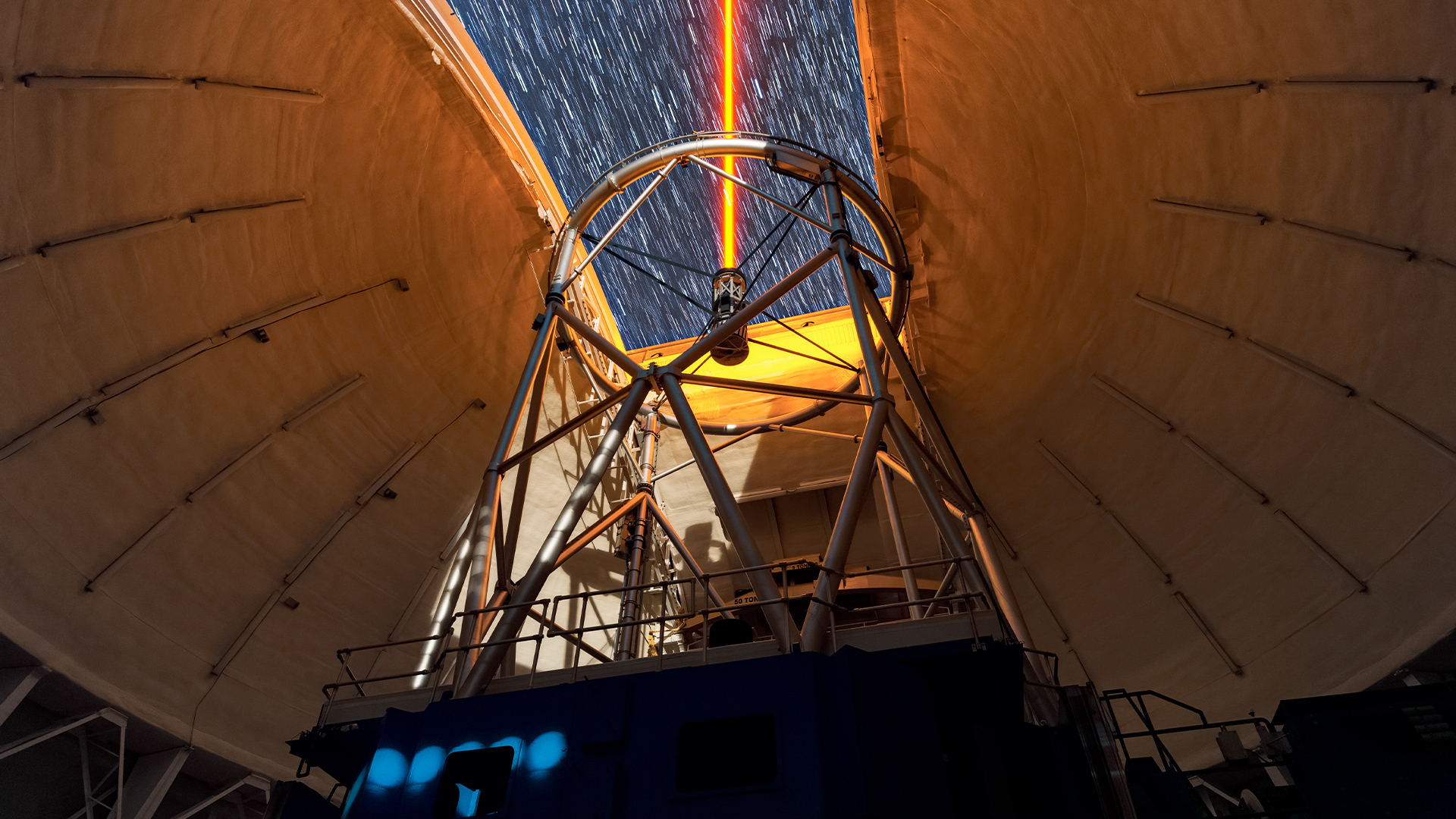Space photo of the week: Astronomers make an 'artificial star' over Hawaii
Twinkling stars can throw off telescope observations. To correct that, observatories like the Gemini North telescope in Hawaii create 'artificial stars' with lasers to hone their equipment.

What it is: The Gemini North telescope
When it was published: Feb. 7, 2024
Where it is: The Gemini Observatory at the summit of Mauna Kea in Hawaii
Why it's so special: Stars twinkle — and that isn't good if you want to study them using large telescopes. The twinkling comes from light passing through different layers of Earth's turbulent atmosphere, which leads to a blurry, jumpy image in a telescope. Astronomers call this effect poor "seeing," and it can interrupt astronomy for many nights — or, at least, it used to.
On the Gemini North telescope, as on many modern ground-based telescopes, astronomers now use adaptive optics, which allows the telescope to correct for the distortions created by Earth's atmosphere. From the top of Gemini North, a yellow laser called TOPTICA is used to make an artificial star on traces of sodium gas in the atmosphere about 50 miles (80 kilometers) over Earth. Computers then deform the telescope's mirrors slightly to correct for any distortion.
That combination of lasers and computing power enables ground-based telescopes to make observations at resolutions that equal, and sometimes exceed, powerful space-based telescopes such as the Hubble Space Telescope and the James Webb Space Telescope (JWST). With the blurring effect of Earth's atmosphere overcome, the ground-based Gemini North can use its larger mirrors to get higher-resolution images of stars, planets and galaxies. (Gemini North's mirror is 26.6 feet, or 8.1 meters, in diameter, whereas JWST's is 21.3 feet, or 6.5 m.) Astronomers hope these adaptive optics will allow ground-based telescopes to directly image exoplanets.
However, this photo and an accompanying image from a different angle are slightly misleading. The orangeyTOPTICA laser shown isn't as bright to the naked eye; it looks that way only because this is a long-exposure image, as the star trails show.
Sign up for the Live Science daily newsletter now
Get the world’s most fascinating discoveries delivered straight to your inbox.

Jamie Carter is a freelance journalist and regular Live Science contributor based in Cardiff, U.K. He is the author of A Stargazing Program For Beginners and lectures on astronomy and the natural world. Jamie regularly writes for Space.com, TechRadar.com, Forbes Science, BBC Wildlife magazine and Scientific American, and many others. He edits WhenIsTheNextEclipse.com.









